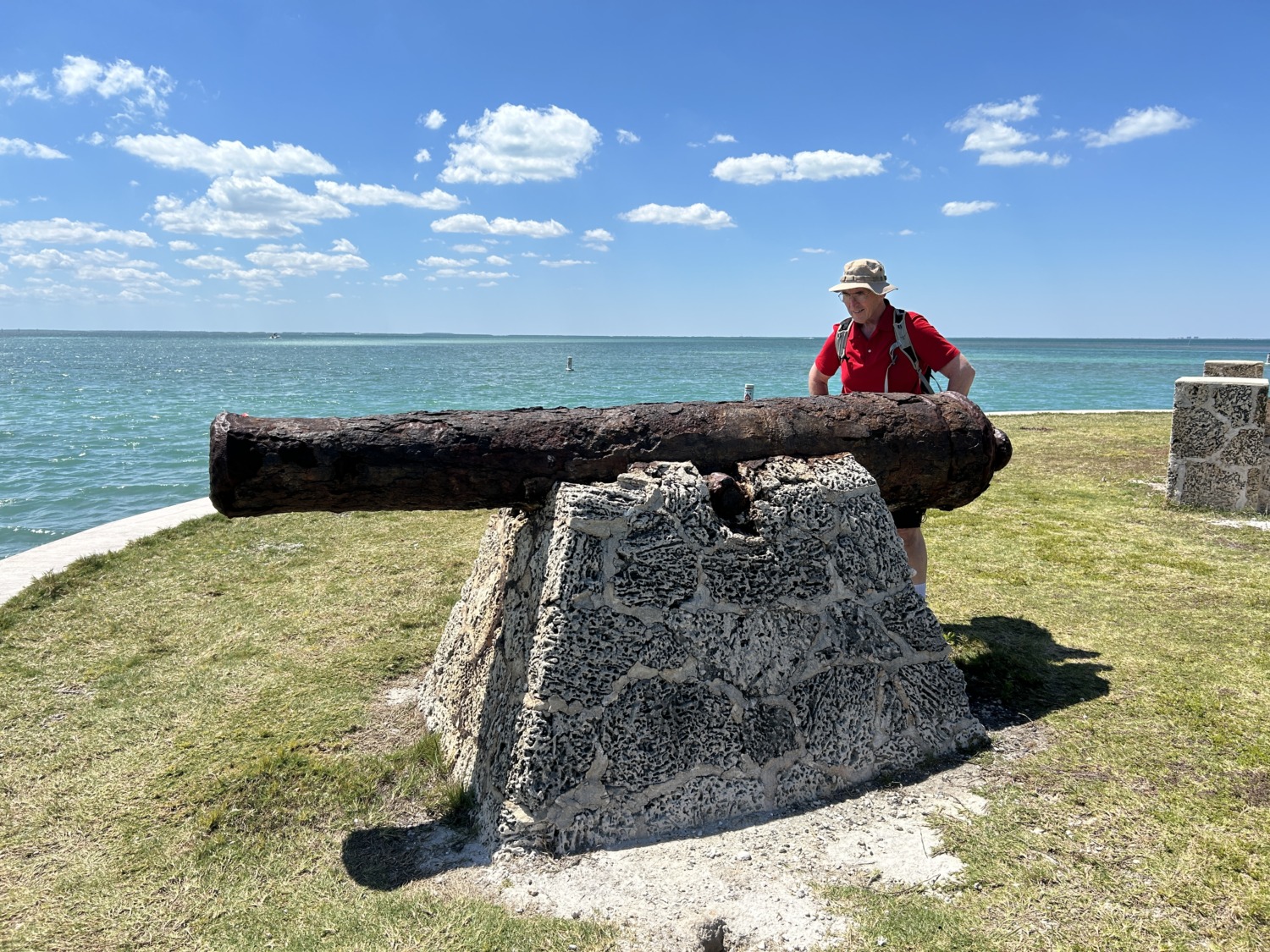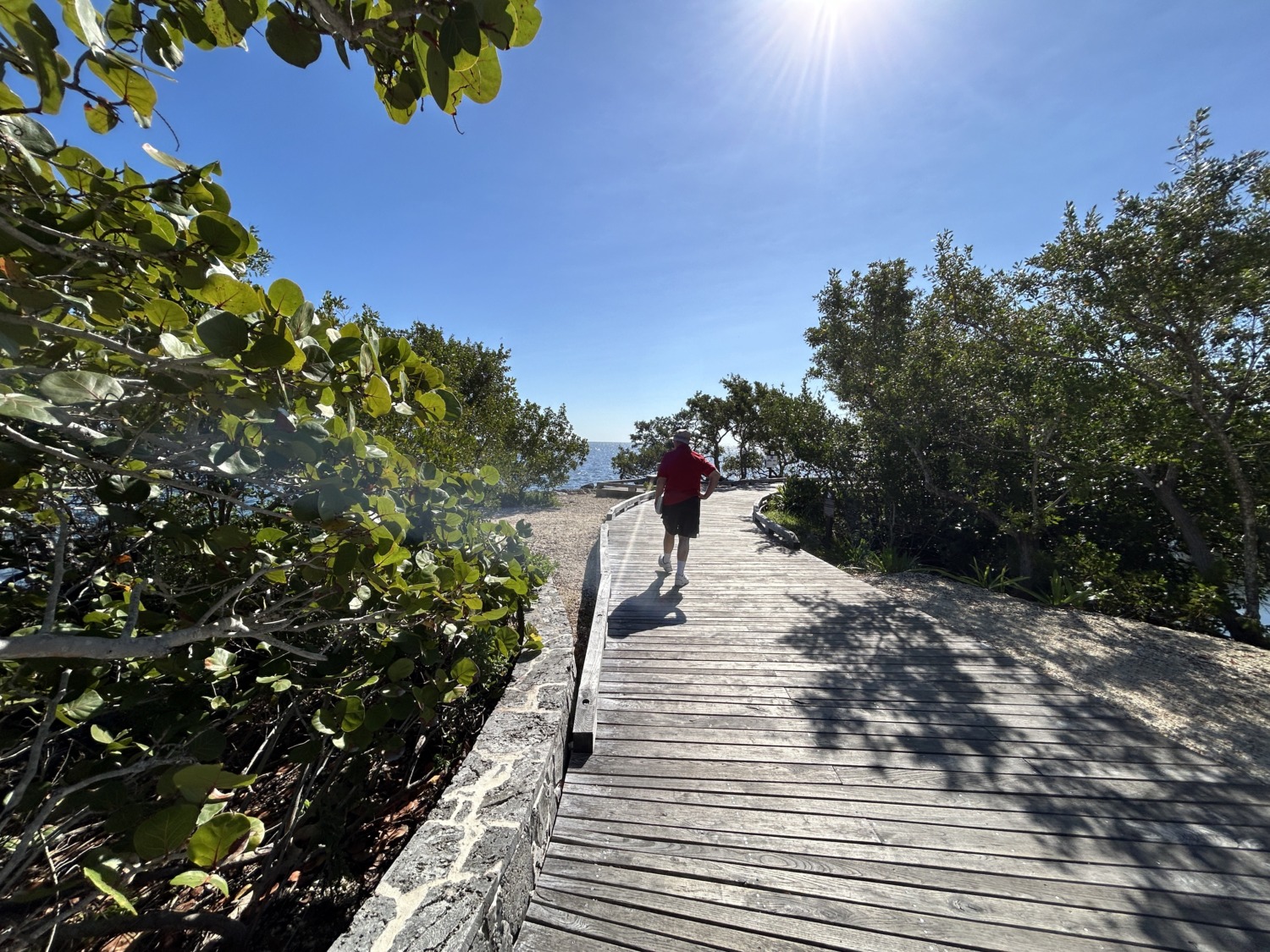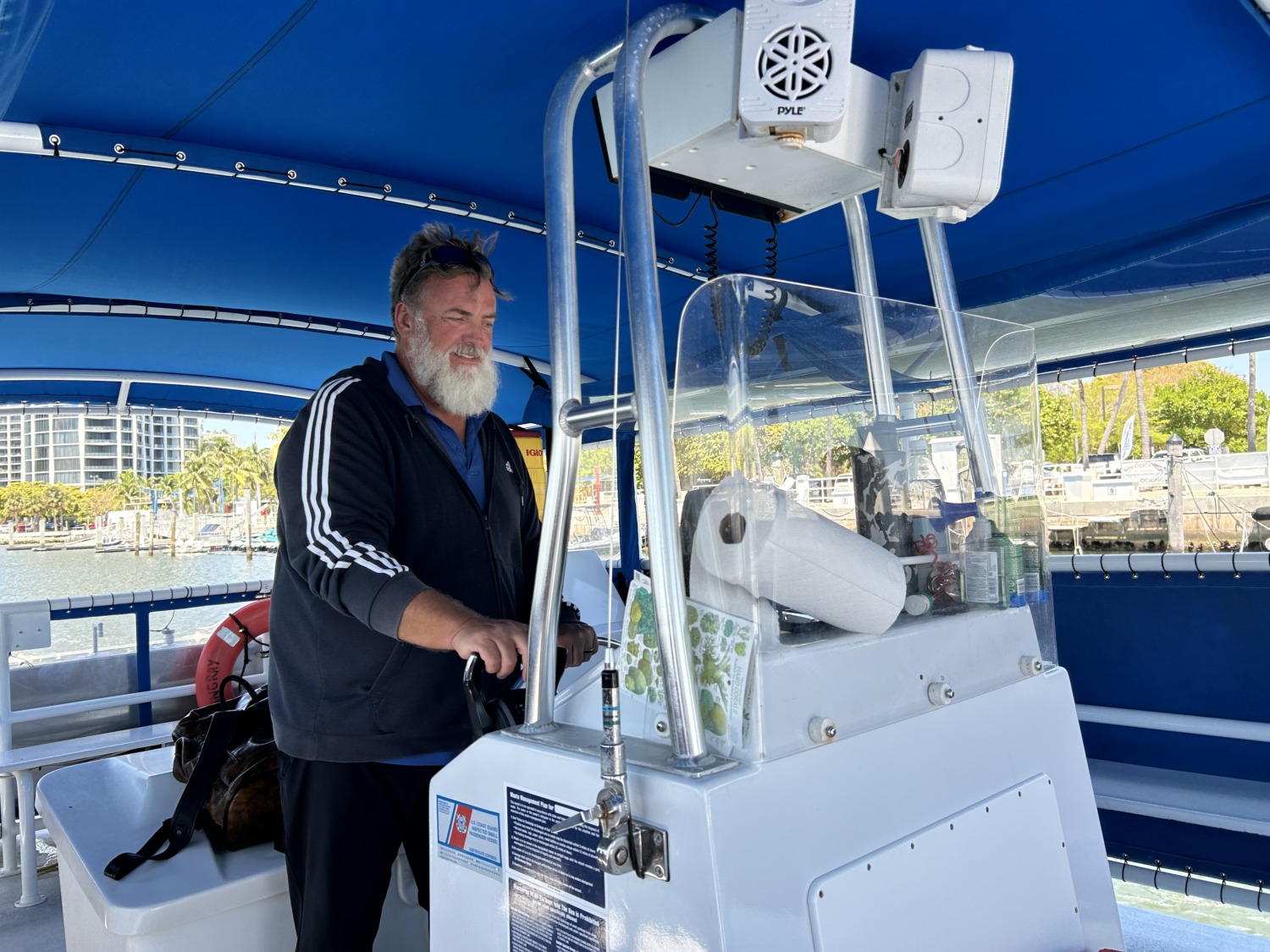To fill out our week of visiting National Park sites, Tom and I stopped at Biscayne National Park just south of Miami. Biscayne National Park is 95% water, which means that the number of things you can do without a boat are limited.
Biscayne National Park preserves Biscayne Bay and its offshore barrier reefs. The shore of the bay is an extensive mangrove forest. The park covers 172,971 acres and includes Elliott Key, the park’s largest island and northernmost of the true Florida Keys. The islands farther north in the park are transitional islands of coral and sand. The offshore portion of the park includes the northernmost region of the Florida Reef, one of the largest coral reefs in the world.
Biscayne National Park protects four distinct ecosystems: the shoreline mangrove swamp, the shallow waters of Biscayne Bay, the coral limestone keys and the offshore Florida Reef. The shoreline swamps of the mainland provide a nursery for fish, mollusks and crustaceans. The bay waters are home to fish, seagrass beds, sponges, soft corals, and manatees. The keys are covered with tropical vegetation including endangered cacti and palms, and their beaches provide nesting grounds for sea turtles. Offshore reefs and waters harbor more than 200 species of fish, birds, whales and hard corals. Sixteen endangered species may be observed in the park.
Tom and I started at the Dante Fascell Visitor Center at Biscayne National Park. We walked the boardwalk along the mangrove swamp and looked for manatees. We didn’t see any, but we saw lots of fish and some turtles. There were also lots of boats moving from the marina next door to the ocean along a no-wake corridor. We talked to a ranger in the Visitors Center and watched the movie. Of course, I got my stamp for my NPS Passport book. The whole visit took about an hour.
The next day, however, we got to see the real heart of the park when we took a Heritage tour to Boca Chita Key with the Biscayne National Park Institute. I had booked the tour online because it seemed like we couldn’t really say we had been to Biscayne National Park unless we went on the water. The tour departed from Dinner Key in Coconut Grove, which was just about impossible to reach. We allowed two hours to drive the 30 miles from our hotel and barely made it. One road was closed in four different places, none of them noted by Google maps.
Once we got to Dinner Key Marina, we had to find a place to park. Most of the large parking lots were marked for people who had boats in the marina. We finally found a place that was pay to park by scanning a QR code. When I finally got us signed up, I found out the time limit was four hours. I needed five for our tour. When we found our tour guide, I asked him about the parking and he told me they would send me a notice on my phone and I could add an hour then. I don’t know why they wouldn’t just let me pay for five hours from the start.
But once we got on the boat, we enjoyed our tour very much. Captain Jeff was very knowledgeable and our tour guide was young and enthusiastic. We had 11 on our tour, which could have accommodated 25 so we had plenty of room on the pontoon boat. It took about 45 minutes to travel the 15 miles to Boca Chita Key and, when we got there, I was amazed by the number of private boats docked on the Key.

Our guide gave us a little history of the Honeywell and Fisher families who owned the Key and then we walked around on our own. People were blasting their music and having parties on the beach and the lawn. I’ve never seen such a party atmosphere in the National Parks! We saw the ranger who had been at the Visitors Center the day before and she said you have to make compromises. Wild.

After our time on the Key, we went out to the coral reef and looked for sea stars and sea sponges that were shaped like tires. Because Captain Jeff knew just where to look, we spotted lots of them. We boated by Soldier Key and then learned about the history of Stiltsville.
Stiltsville started in the 1930’s as a group of houses built on stilts in a shallow part of Biscayne Bay. It was a popular place for drinking and gambling during the Prohibition era. Eventually there were about 25 houses. Hurricane Betsy put an end to building new houses in Stiltsville in 1965. The state of Florida refused to grant new permits for building and also disallowed commercial uses of the buildings. The homes became part of the Biscayne National Park in 1980. The park agreed to let the owners live in them and use them under a 50 year lease. The agreement has a caveat that, if the buildings are 50% destroyed, the owners will remove the remains.
Hurricane Andrew, in 1992, destroyed all but seven of the remaining homes. One of the homes burned down in 2020, so only six remain. None of them looked like they are in great shape.

After visiting Stiltsville, we headed back to Dinner Key. The tour was informative and enjoyable. We felt like we got to see more of the park and enjoyed learning about its cultural (human) history.





